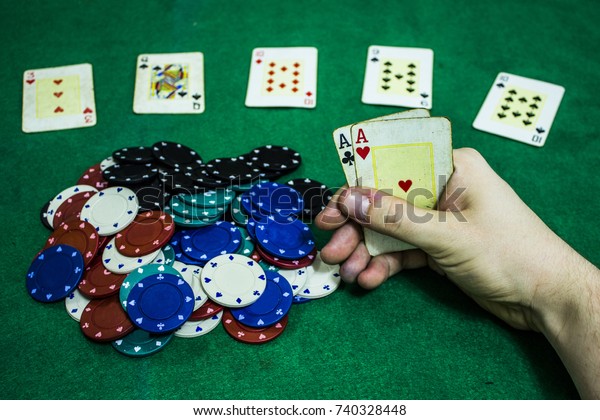Best Hand Against Aces

This is a discussion on Best Hand against Aces within the online poker forums, in the Learning Poker section; So I know that Aces are the best hand you can have, but I was wondering what hand. The best hand against pocket aces is pocket aces— that being said if you’re getting it in preflop with 5x6x or 6x7x or anything like that. You need to take a step back and learn some basic strategy. The only time 56 is getting it in against aces is on a flush or straight draw on the flop, in a very specific circumstance where you are big stack on the bubble or If they have an extremely high post flop fold.

Those Pesky Aces Got you Blue?
There’s a question for the ages, in poker terms. The short answer is “Hah!” but the longer and more careful answer is, “It depends on the game and conditions.”
Slow-playing a pair of pocket aces, particularly under the gun, is often an invitation to trouble, and as you grow in experience at the game, you will invariably run up against a player who never limps under the gun, always raising if he’s going to play – except in the rare case he has pocket aces. The idea, of course, is that he wants someone to raise from late position, so he can come back over the top with a hefty three-bet in an attempt to get lots of chips into the pot before the flop.
Once you encounter this particular breed of player and see this trait, you’ll be able to limp behind with pocket queens, toss them away if other action compels you to, and toss them away for cheap after the flop if you don’t connect for the set. The lesson: Don’t be that type of player, and make your pocket aces so obvious by your position bets.
That said, there are some general rules you can adhere to if that 1-in-229-hand occurrence comes up, and you find yourself staring down at pocket rockets. The general rule is to play them a little bit faster then you might otherwise believe. It’s easy to lose a lot of money with aces, perhaps even easier than it is to win a lot of money with them. So with that in mind:
First Rule, Don’t Limp
Don’t limp with your aces if you are at a soft, passive (often lower-stakes) table that often sees four or five or six players seeing a cheap flop. Pocket aces play very poorly against a large number of competing hands, and even though they’re a prohibitive favorite against any other single hand, they can often be a large dog against a collection of other hands. Don’t forget it’s the trash that connects to the flop that stays around and plays; the trash that misses folds and disappears from the hand. Coordinated flops like 9-10-J are absolute death for pocket aces in a multi-way pot. Throw them away and lick your wounds quietly.
Don’t Always 3 Bet
Conversely, don’t always make the automatic three-bet in poker with pocket aces before the flop. When holding pocket aces, you want to limit the field, not destroy it. If there’s a healthy raise pre-flop by an aggressive player, and your image is loose, go ahead and make the three-bet raise and mix it up at will. But another ploy that works well against tighter, more cautious players is called “second-hand low”. This is when an early-position player makes a healthy opening raise – perhaps $12 or $15 in a $1/2 cash game, and you just smooth-call from middle position. This gives a late-position player or one of the blinds the opportunity to look at a half-good hand like A-K and make a three-bet squeeze raise, which should have you dancing in your seat. Don’t do this too often or become too devoted to other subtle tricks, lest you succumb to “fancy play syndrome”, but the occasional subterfuge will improve your game and profit margin.
About the Pot Odds
Use your pocket aces to deny proper pot odds to your opponents. Whether in cash games or tournaments, a situation often arises where you can size your bets in such a way as to ensure a single opponent does not have the proper odds to continue in the hand, even though he may think he does. Imagine a cash-game scenario, playing something as simple as $1/2, where you and your opponent in a hand both have $120 in chips. He opens to perhaps $10, and you, holding pocket aces here, can go ahead and put in an undersized reraise to perhaps $25 to induce the call. While he is rightly guessing that his $15 call is worth it when there’s $38 or more in the pot and your remaining $95 to potentially still be won, you have the knowledge that your aces are between 3.6:1 and 6:1 favorites heads-up before the flop against any other hand.
The likeliest hand to crack pocket aces is 10-9 suited, but the aces will still win 77% of the time. Play your aces just guarded enough against possible sets and flops that make “ace-cracker” hands work, but most of the time, following up with a sizeable post-flop bet is again the odds-on play. Often, your opponent will flop a flush or straight draw, and you must make it unprofitable for him to pursue that draw – even though many players can’t resist the temptation and will call against the odds anyway. These players are your long-term victims, even if they are paradoxically the ones most likely to crack your aces in any given hand. Such is the nature of poker. We always remember the aces we lose with, but rarely the ones we win with!
Aces and Drawing Hands, The Crackers
Beware drawing hands in deep-stack situations. A corollary to the above. No matter how pretty your pocket aces look, pocket aces don’t beat straights and flushes. You must drive drawing hands out of the hand, and the only way to do that is to protect your aces with a large bet. Pre-flop that means limiting the field; post-flop that means putting in raises of at least three-quarters of the pot on each round to make sure your opponent doesn’t have the right pot odds to chase those eight- and nine-outers.
Hitting a Set of Aces
If you’ve flopped a set of aces, there is always a potential straight draw. This might sound odd, but a set of kings is often a far safer hand to slow-play after the flop than is a set of aces. Imagine yourself with a pair of pocket aces, and envision a flop of any three non-paired cards that include an ace. No matter what the other two non-ace cards are, if you let your opponents see the turn for free, a turn card that doesn’t pair the board will always put some sort of straight in play. It might be a highly unlikely holding, such as the big blind holding 4-7 and the board through the turn showing A-5-J-8, but if you’ve let this player see all these cards for free and a 6 comes off on the river (roughly a 1-in-11 chance), you’ve only yourself to blame. You have to charge them something for the dream of making that hand.
No worthy bad beat story ever started with, “I limped with pocket aces….” Enough said.
What Hand Can Beat 4 Aces
Author:Joseph Falchetti (twitter)
(C) Copyright PokerWebsites.com, 2018